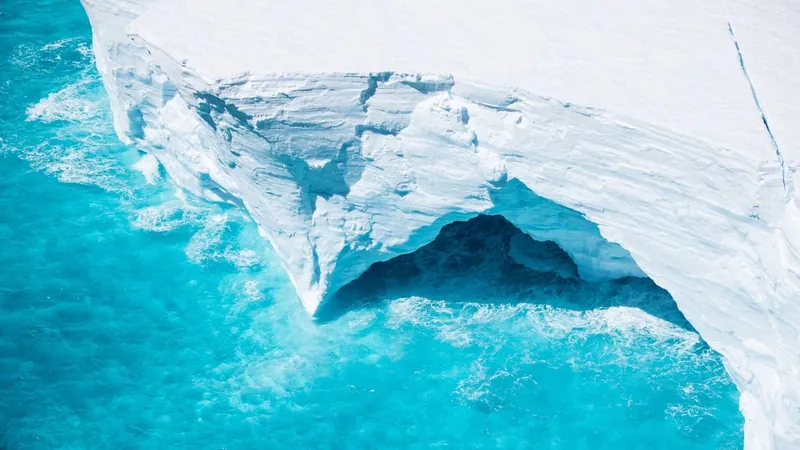
Is Climate Change Really Responsible for Antarctica’s Massive Icebergs? Here’s What Scientists Discovered!
2024-12-31
Author: Arjun
Introduction
Antarctica is rapidly losing its ice, a phenomenon often attributed to climate change. Among the most eye-catching occurrences are massive calving events, such as the formation of the A-68 iceberg in 2017, which was comparable in size to the state of Delaware, covering an area of approximately 5,800 square kilometers (2,239 square miles). These events capture headlines, but scientists are still grappling with how climate change ties into their frequency and severity.
Recent Study Findings
A recent study, conducted by researchers led by MacKie et al., explored the relationship between climate change and the creation of large icebergs in Antarctica through a comprehensive, long-term analysis. The researchers examined the single largest iceberg to calve each year from 1976 to 2023, utilizing statistical methods to handle the rarity and uneven distribution of these massive calving events. The icebergs studied boasted surface areas reaching up to 11,000 square kilometers (4,247 square miles).
Unexpected Results
Intriguingly, their findings indicated a slight decrease in the surface area of the largest annual icebergs over time. This is surprising given that the period observed saw a continuous rise in global temperatures. The authors concluded that while climate change undeniably affects the Antarctic environment, extreme calving events, such as the formation of colossal icebergs, do not seem to be increasing in frequency as a direct result of climate change.
Smaller Icebergs Matter
However, it’s important to note that although large icebergs capture public attention, the number of smaller calving events has risen significantly. These smaller icebergs contribute substantially to the overall loss of ice in a cumulative manner, described by the researchers as "death by a thousand cuts." This highlights a critical aspect of climate change impacts in Antarctica—while major calving events grab headlines, it is the smaller, more frequent events that primarily drive mass ice loss.
Future Projections
What's more, the researchers hinted that the most colossal iceberg Antarctica has seen might still be on the horizon. Their models suggest a potential "once in a century" iceberg could emerge, possibly measuring around the size of Switzerland, at approximately 38,827 square kilometers (14,991 square miles).
Conclusion
As this research unfolds, it becomes increasingly vital to revisit how we view Antarctica's ice loss. It may not be solely about the stark, jaw-dropping events that stem from climate change, but also about the persistent, smaller alterations chipping away at this icy continent. Are we underestimating the significance of these less sensational but more frequent occurrences? It seems like it's time to rethink the narrative surrounding Antarctica’s massive icebergs and their relation to climate change!

 Brasil (PT)
Brasil (PT)
 Canada (EN)
Canada (EN)
 Chile (ES)
Chile (ES)
 Česko (CS)
Česko (CS)
 대한민국 (KO)
대한민국 (KO)
 España (ES)
España (ES)
 France (FR)
France (FR)
 Hong Kong (EN)
Hong Kong (EN)
 Italia (IT)
Italia (IT)
 日本 (JA)
日本 (JA)
 Magyarország (HU)
Magyarország (HU)
 Norge (NO)
Norge (NO)
 Polska (PL)
Polska (PL)
 Schweiz (DE)
Schweiz (DE)
 Singapore (EN)
Singapore (EN)
 Sverige (SV)
Sverige (SV)
 Suomi (FI)
Suomi (FI)
 Türkiye (TR)
Türkiye (TR)
 الإمارات العربية المتحدة (AR)
الإمارات العربية المتحدة (AR)